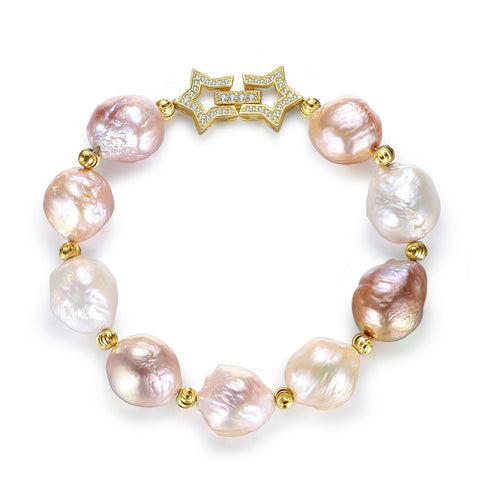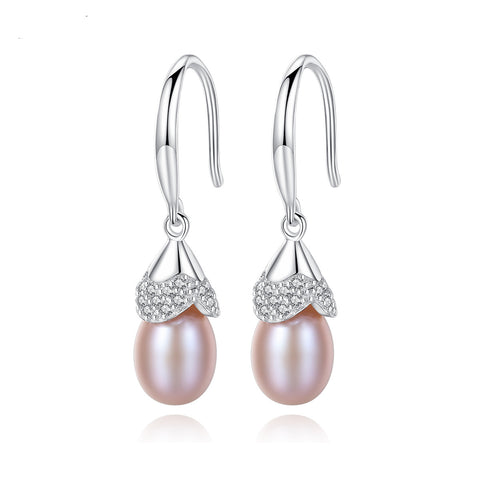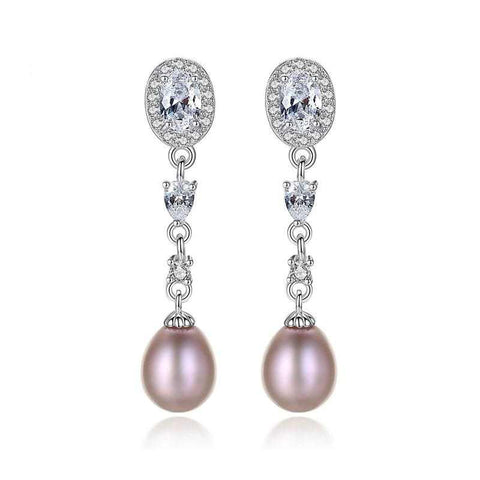Pearl grading is a key indicator to know before finally buying pearl jewelry. In the absence of a universal pearl grading standard, consumers must buy from reputable and trusted pearl suppliers who uphold the highest standards of pearl quality. With thousands of positive customer testimonials online, HER'S Style has built a reputation for exceeding expectations for providing high quality pearl jewelry.
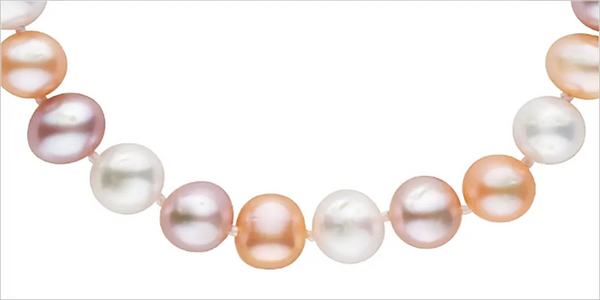
Freshwater pearls come in the widest variety of natural colors and shapes.
Perhaps the most important point when it comes to understanding pearl grading to make an informed buying decision is that it is impossible to compare one company's grading and grading system to another.
Unlike diamonds, pearls do not have a standardized grading system. Every company in the world that grades and sells freshwater pearls uses a system they designed and created themselves. Every system is subjective and every system is unique.
Below is the freshwater pearl grading system we adhere to.
Pearl Grade
Freshadama
Freshadama-grade pearls are loose-grained pearls, or individually selected before drilling and polishing, with exceptional quality characteristics. These pearls are usually sold wholesale in undrilled singles and pairs. Freshadama™ strands are made of these pearls; drilled and matched by us.
- Highest grade freshwater pearls
- Exhibits intense sheen and deep reflective direction
- round
- clean surface
- 0.01% of freshwater pearls produced today
- excellent match
AAA
- Highest non-bulk pearl grade on the market
- Shows excellent gloss
- round to eyes
- clean surface
- Top 1% of Freshwater Pearls Produced Today
- excellent match
AA+
- Highest grade freshwater pearls
- Nearly round, looks perfectly round from a yard away
- glossy good to strong
- 95-100% clean surface
- Top 5% of Freshwater Pearls Produced Today
- Excellent to excellent match
AA
- Shows good average gloss
- Near to non-circular
- 80-100% clean surface
- Pearls exhibit good to moderate reflections
- Top 10% of Freshwater Pearls Produced Today
- good to moderate match
A
- Exhibits average to low gloss
- Near to non-circular
- 70-80% clean surface
- Top 20% of Freshwater Pearls Produced Today
- good to moderate match
Commercial
- Exhibits average to dull
- Near to non-circular
- Moderate to severe imperfections
The A-AAA grading system uses all 7 value factors to evaluate our pearls and assigns each chain or pair of earrings its place on this easy-to-understand scale.
In this grading guide, you'll learn about each of the 7 value factors, what the A-AAA grading system is, how it relates to farmers' A-D grading systems, and more.
Understanding the 7 Value Factors of Pearl Grading
Pearl experts grade and evaluate pearls using 7 value factors. these are:
Size
Shape
Color/Overtone Strength
Nacre quality
Luster
Surface Quality
Matching
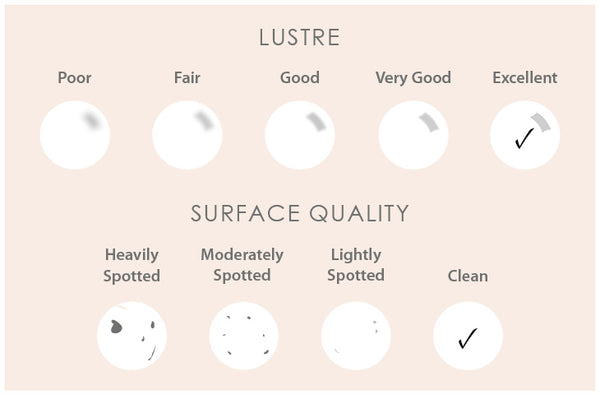
Below we will examine each of these factors and how they affect the overall value of a pearl.
Size: All other things being equal, the bigger the pearl, the better. Cultured pearls range in size from tiny seed pearls of 1.0mm to 21.0mm, with very few or even larger ones. The largest cultured pearl in the world to date is a stunning 29.65mm South Sea Baroque pearl.
As with diamonds, the price increases exponentially for every millimeter that increases in size. This is because larger pearls are harder to cultivate, take longer to produce and are therefore rarer.
Shape: Round is the most difficult shape to culture, making it the rarest of cultured pearl shapes, and - if all other factors are equal - often the most valuable. But there are exceptions. Well-shaped pear, oval or baroque (irregularly shaped) cultured pearls are also favored by pearl lovers.
Different pearl types have different criteria when it comes to classifying shapes. The shape requirements of Japanese sea culture pearls are the most stringent. These strands are classified by shape from top to bottom as circular, near-circular, semi-baroque, and baroque.
Color: Natural and cultured pearls come in a wide range of colors. There are warm tones like yellow, orange and pink and cool tones like blue, green and purple. Pearls come in a wide range of shades, from light to dark. Pearl colors tend to be muted and have a soft, subtle quality.
Pearl colors can have three components. Body color is the primary overall color of the pearl. Flooding is one or more translucent colors that sit on top of the pearl's body color. Orient is a shimmering rainbow of colors on or below the surface of the pearl. All pearls show body color, but only some show overtones, orientation, or both.
The laws of supply and demand determine the value of certain pearl colors at any given time. If quality pearls showing the preferred color are in short supply, their prices can rise to unusually high levels. Other complex factors, such as fashion trends and cultural traditions, also influence color preferences.
Luster: Of the seven pearl value factors, luster is probably the most important. Luster imparts a unique beauty to natural or cultured pearls.
- Excellent - reflections appear bright and sharp
- Very good - reflections appear bright and almost sharp
- Good - reflections are bright but not sharp, with slightly blurred edges
- Fair – reflections are weak and blurry
- Poor - reflections are dim and scattered
Within a pearl type, other things being equal, the higher the luster, the higher the pearl's value.
Surface Quality: Like colored gemstones, most pearls cannot be perfect. Some may develop abrasions that superficially look like a series of scratches, or flat sections that don't affect their basic shape, or irregular ridges that look like creases or wrinkles.
If the surface features are numerous or severe, they can affect the durability of the pearl and severely reduce its value. If the pearls are few in number, or if they are small enough to be hidden by drilling or inlays, the surface features have less of an impact on the beauty and value of the pearls.
Nacre Quality: Luster is closely related to nacre quality. If you can see the core under the nacre, or if the pearl looks dull, chalky, you can think that the nacre is thin. This affects the luster and durability of the pearl.
Matching: Jewelry designers sometimes deliberately mix colors, shapes, and sizes for unique effects, but for most pearl chains, earrings, or other multi-pearl jewelry, all quality factors of the pearl should match.
Also Read: 5 Fascinating Facts About Pearls and Top 5 June Birthstone Jewelry Picks




